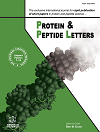
Full text loading...

Pleckstrin homology and RhoGEF domain-containing G7 (PLEKHG7) is a largely uncharacterized gene whose role in diffuse large B-cell lymphoma (DLBCL) remains unexplored. Thus, we aimed to profile PLEKHG7 expression, assess its prognostic value, and explore therapeutic implications.
RNA-seq data from TCGA-DLBCL (n=48) and GTEx normal tissues were analyzed via UCSC XENA. Differential expression was tested using the Wilcoxon rank-sum test and FDR correction. Prognostic significance was evaluated by Kaplan–Meier and multivariate Cox regression (nomogram). Gene set enrichment analysis (GSEA) mapped PLEKHG7-associated pathways. Drug sensitivity correlations were extracted from RNAactDrug. qRT-PCR validated expression in DLBCL cell lines (OCI-Ly3, SU-DHL-4) versus normal B lymphocytes (GM12878).
PLEKHG7 was markedly up-regulated in DLBCL tissues (P < 0.001) and cell lines versus normal controls (AUC = 0.739). High PLEKHG7 expression predicted inferior overall survival (HR = 8.88; 95% CI: 1.09–72.27; P = 0.041) and remained an independent prognostic factor (HR = 10.109; P = 0.033). GSEA linked PLEKHG7 to ribosome, oxidative phosphorylation, proteasome, cytokine-cytokine receptor interaction, spliceosome, and ECM-receptor pathways. Elevated PLEKHG7 negatively correlated with sensitivity to idelalisib, omipalisib, belinostat, methotrexate, and dacinostat.
The study's limitations include reliance on bioinformatics data and the lack of functional validation. Further research is needed to elucidate the molecular mechanisms underlying PLEKHG7's role in DLBCL and validate its clinical utility.
PLEKHG7 is significantly overexpressed in DLBCL and independently predicts poor prognosis. Its association with key oncogenic pathways and drug resistance underscores its potential as both a prognostic biomarker and a therapeutic target, warranting further functional validation.